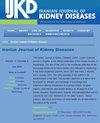关注肾脏护理中的差距:将我们的知识转化为我们的行动。
IF 0.7
4区 医学
Q4 UROLOGY & NEPHROLOGY
引用次数: 0
摘要
从历史上看,新疗法从临床证据转化为日常实践平均需要 17 年的时间。鉴于目前已有的高效疗法可以预防或延缓肾病的发生和发展,这个时间太长了。现在是缩小我们所知道的与我们所做的之间差距的时候了。对于高血压和糖尿病等肾脏病常见风险因素的预防和管理,已有明确的指导方针,但全世界只有一小部分肾脏病患者被确诊,接受目标治疗的患者则更少。同样,绝大多数肾病患者都不知道自己的病情,因为肾病在早期往往是无声无息的。即使在已经确诊的患者中,许多人也没有接受适当的肾病治疗。考虑到肾病恶化、肾衰竭或死亡的严重后果,必须及早开始适当的治疗。必须从初级保健开始,最大限度地利用早期诊断和治疗肾病的机会。从患者到临床医生,从医疗系统到社会因素,存在着许多系统性障碍。为了维护和改善世界各地每个人的肾脏健康,必须认识到这些障碍中的每一个,以便制定和实施可持续的解决方案,不再拖延。DOI: 10.52547/ijkd.8216.本文章由计算机程序翻译,如有差异,请以英文原文为准。
Mind the Gap in Kidney Care: Translating What We Know Into What We Do.
Historically, it takes an average of 17 years to move new treatments from clinical evidence to daily practice. Given the highly effective treatments now available to prevent or delay kidney disease onset and progression, this is far too long. The time is now to narrow the gap between what we know and what we do. Clear guidelines exist for the prevention and management of common risk factors for kidney disease, such as hypertension and diabetes, but only a fraction of people with these conditions worldwide are diagnosed, and even fewer are treated to target. Similarly, the vast majority of people living with kidney disease are unaware of their condition, because in the early stages it is often silent. Even among patients who have been diagnosed, many do not receive appropriate treatment for kidney disease. Considering the serious consequences of kidney disease progression, kidney failure, or death, it is imperative that treatments are initiated early and appropriately. Opportunities to diagnose and treat kidney disease early must be maximized beginning at the primary care level. Many systematic barriers exist, ranging from patient to clinician to health systems to societal factors. To preserve and improve kidney health for everyone everywhere, each of these barriers must be acknowledged so that sustainable solutions are developed and implemented without further delay. DOI: 10.52547/ijkd.8216.
求助全文
通过发布文献求助,成功后即可免费获取论文全文。
去求助
来源期刊

Iranian journal of kidney diseases
UROLOGY & NEPHROLOGY-
CiteScore
2.50
自引率
0.00%
发文量
43
审稿时长
6-12 weeks
期刊介绍:
The Iranian Journal of Kidney Diseases (IJKD), a peer-reviewed journal in English, is the official publication of the Iranian Society of Nephrology. The aim of the IJKD is the worldwide reflection of the knowledge produced by the scientists and clinicians in nephrology. Published quarterly, the IJKD provides a new platform for advancement of the field. The journal’s objective is to serve as a focal point for debates and exchange of knowledge and experience among researchers in a global context. Original papers, case reports, and invited reviews on all aspects of the kidney diseases, hypertension, dialysis, and transplantation will be covered by the IJKD. Research on the basic science, clinical practice, and socio-economics of renal health are all welcomed by the editors of the journal.
 求助内容:
求助内容: 应助结果提醒方式:
应助结果提醒方式:


